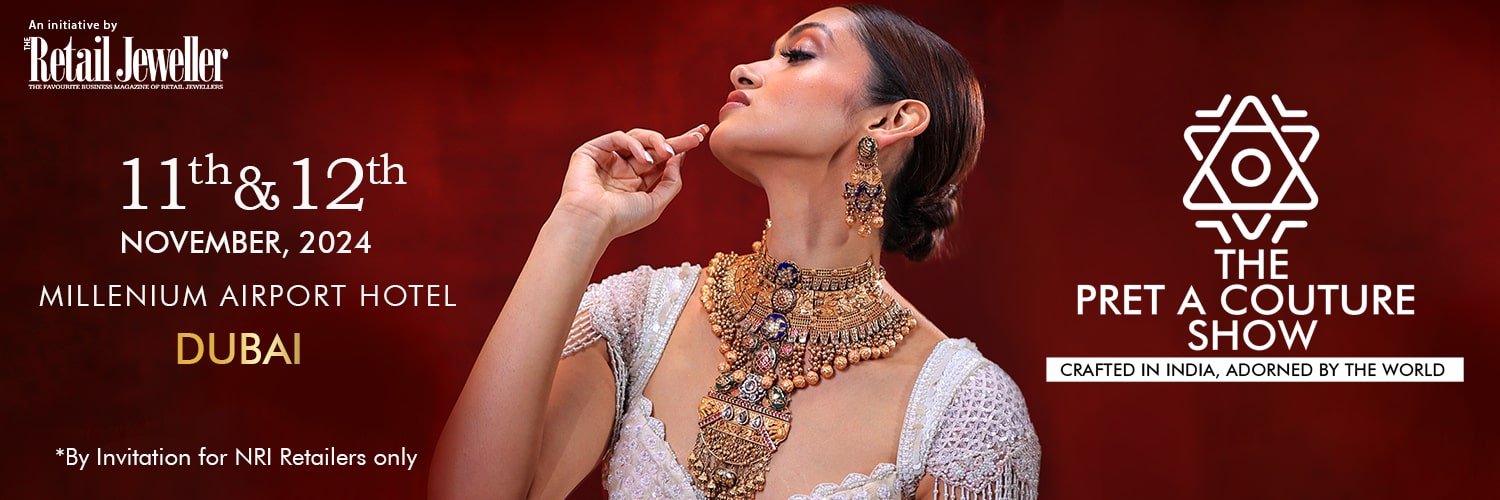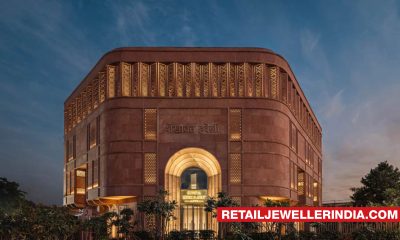Featured Interview
Homage to the City of Gems

On her brand’s 25th anniversary, Sunita Shekhawat opened the Museum of Meenakari Heritage in Jaipur—a project that deeply and imaginatively integrates the backstory of the age-old Meenakari craft into the buying journey, setting new standards in India for experiential luxury jewellery retail. She tells The Retail Jeweller why it is a passion project, how it creates a new narrative for the brand, and why it took over four years to complete
Located in the upscale C-Scheme area of Jaipur, the museum occupies a 2,200-square-foot space inside the red sandstone Shekhawat Haveli. The Museum of Meenakari Heritage (MoMH) is not just a space but a journey that traces the art of Meenakari from its 16th-century Persian origins through its evolution in India. It is a tribute to the city of Jaipur, offering an immersive experience of the historical and cultural richness of Meenakari enamelling while enhancing the retail journey.
EDITED EXCERPTS:
MAITHILI PATANGE (MP): What inspired the Museum of Meenakari Heritage, and what was your vision when you first conceptualised the idea?
SUNITA SHEKHAWAT (SS): Jaipur, the epicentre of coloured stones and fine jewellery, is pivotal in my journey to establishing the House of Sunita Shekhawat. Over the years, my desire to preserve the craftsmanship deepened. The museum has been a long-nurtured dream and a labour of love for the art of Meenakari. It is a testament to the artisans who have carried forward this ancient craft through the centuries and the city for its contribution to the global jewellery landscape.
MP: Could you describe how the museum came together into this timeless structure?
SS: I worked closely with the scholar and art historian Usha R. Balakrishnan to lead this project. The museum’s collection includes over 120 reproductions of jewellery pieces dating as far back as the 15th century. They were originally from India and are now housed in international institutions like the British Museum and the Metropolitan Museum of Art. The museum spans three floors, connected by a sculptural staircase. The ground floor houses the museum gallery, the basement has offices and workshops, and the upper floors are designated for retail, like-minded luxury brands, and a restaurant with panoramic views of the Rajmahal Palace.
MP: As an expert in Meenakari enamelling, how do you ensure that traditional techniques are accurately preserved and showcased through the museum?
SS: The museum serves as a knowledge repository, preserving various enamelling techniques, such as cloisonné, champlevé, plique-à-jour, and basse-taille. It becomes a valuable resource for artists, scholars, and enthusiasts who wish to learn and carry forward these traditions.
MP: Could you highlight a few unique pieces at the museum that showcase the various enamelling techniques and their historical significance?
SS: A favourite piece is the parrot-shaped turban ornament, the turra, an exquisite example of the En ronde bosse technique. Another significant piece is the jigha, set with golden sapphires and enamelled with red flowers and green leaves, based on a 1797 drawing by Jaipur goldsmith Terhaswamiran Naarayanuj. The sarpech, believed to be part of the Nizam of Hyderabad’s treasury, showcases a combination of gems and champlevé enamelling. The museum’s façade continues Jaipur’s Indo-Saracenic roots, drawing inspiration from Rajput, Mughal, and Art Deco influences.
MP: How significant is Jaipur’s role in the history of Meenakari enamelling, and how has the city contributed to the global jewellery landscape?
SS: The MoMH pays homage to Jaipur, a hub for coloured stones and the emerald capital of Asia. The city has been inspirational and resourceful for our brand. Jaipur is a cosmopolis of culture and commerce, attracting travellers, artists, and merchants. Over centuries, it has evolved into a cultural and economic powerhouse, becoming a centre for crafts and tourism.
MP: What were your biggest challenges in creating this unique museum, and how did you overcome them?
SS: The idea for the museum originated seven years ago and took over four years to complete. The biggest challenge was the pandemic, which imposed travel restrictions and made coordination difficult. We relied on Zoom calls to streamline our actions and adhere to a clear plan to build the museum.
MP: Considering tangible and intangible factors, what has been the overall return on investment for establishing the museum?
SS: The museum is a passion-driven project. Its purpose is to pay tribute to the city and the craft of Meenakari. We hope it functions as a unique cultural space where people can learn about the craft and its significance to Indian jewellery and Jaipur.
MP: From a business perspective, how has the museum’s establishment influenced your jewellery retail and design operations?
SS: We recommend visitors come leisurely to witness the craftsmanship behind each piece. Understanding the craft under one roof helps clients appreciate the value of each piece. We provide a personal touch to the interaction, meeting clients by appointment to dedicate undivided time to their needs. This approach helps us better understand their vision and requirements.
MP: What are your plans for the museum?
SS: The museum is dynamic, constantly adapting and growing to enhance the visitor experience. We focus on maintaining a dynamic environment that reflects our ongoing commitment to cultural preservation and education.
By Maithili Patange





 Wide Angle4 weeks ago
Wide Angle4 weeks agoIndia has overtaken China to become second largest diamond market: De Beers CEO Al Cook

 Daily News1 month ago
Daily News1 month agoUS-based private equity firm Advent International to acquire Orra Fine Jewellery, say media reports

 Exclusive2 months ago
Exclusive2 months agoThe House of Rose debuts in Mumbai with a 21,000 sq. ft. experiential concept space showcasing fine jewellery and luxury watch brands

 Wide Angle1 month ago
Wide Angle1 month agoEminent jeweller Viren Bhagat sets up first global boutique in London’s Mayfair























